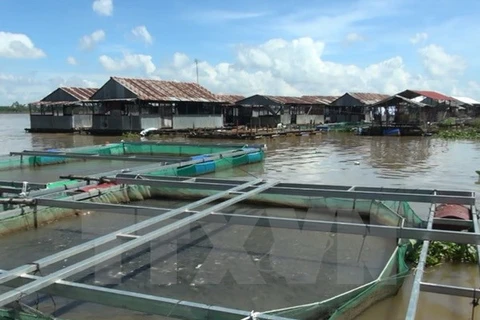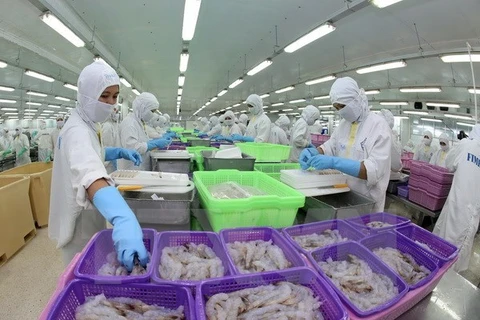 Rice noodle makers in Van Cu Village in the central province of Thua Thien-Hue have built tanks to filter untreated wastewater from the production process (Photo baotainguyenmoitruong.vn)
Rice noodle makers in Van Cu Village in the central province of Thua Thien-Hue have built tanks to filter untreated wastewater from the production process (Photo baotainguyenmoitruong.vn) Although when served on a plate, bun - also known as vermicelli - usually smells delicious, the production process in Van Cu smelled bad for years, the result of wastewater being discharged untreated into ditches along the roads, ponds and fields. Water in the ditches and ponds turned black, and families had to keep their doors and windows shut to keep out the stink.
With households investing in advanced machinery for rice noodle production, the amount of untreated waste kept growing, said Nguyen Van Xiem, a local resident said.
“In the past, white foam covered the untreated wastewater surface from rice noodle production, flowing out to ponds and rice fields. So the smell was all over the village,” he said. The number of people suffering respiratory and dermatological diseases was also increasing rapidly, he added.
But in recent years, most households have built tanks to filter wastewater during the production process before discharging it into the sewage system.
Nguyen Xuan No, a veteran noodle maker, said his family built two tanks to filter wastewater, substantially reducing pollution.
Nguyen Van Tich, head of the local traditional craft association, said the provincial Department of Science and Technology had allocated 2.8 billion VND (123,300 USD) to support households in building wastewater treatment systems starting in 2012.
Now, 80 percent of households use biogas to treat livestock waste and the whole village has built filter tanks, he said. “This has become a great boost for the development of the craft village,” Tich said.
The collection of garbage and plastic bags generated during the vermicelli production process has also been promoted.
Nearly 50 percent of village households make vermicelli. The remaining residents participate in the supply of raw materials and marketing tens of tonnes of noodles each day.-VNA
VNA























